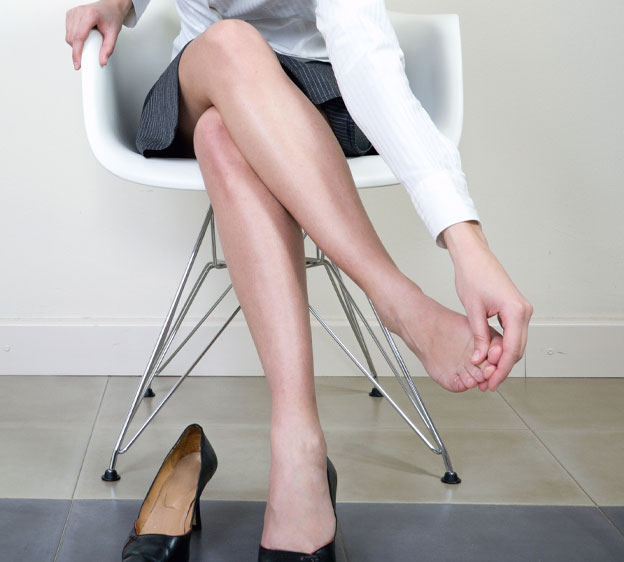3 Steps to Ease Bunion Pain
August 3, 2021
Bunions: You may wonder how a small, bony bump causes so much discomfort. Bunions can first be a nuisance you learn to deal with. Eventually though, bunions left untreated cause more serious foot problems. The good news is bunion pain can often be treated at home. When you first spot a bunion, it’s time to find and eliminate possible causes and seek care.
Why Do Bunions Form?
Bunions are painful bumps that develop inside the foot at the big toe joint. Along with a painful bump, you may also have stiffness in the big toe, redness and calluses. You can have a bunion on one foot or both.
Bunions form when bones that make up a joint in your foot move out of alignment. Tight, narrow shoes can squeeze the toes together and cause bunions to develop. However, your shoes may not be the sole cause.
“Wearing ill-fitting shoes is not the main cause of bunions,” says Dr. Trenton Statler, a board-certified podiatrist who sees patients in Beaufort and Bluffton. “Genetics play a major role. Some people are born with weak connective tissue, joint disease, flat feet or other biomechanical problems that increase the risk of developing bunions.”
How to Treat Bunions at Home
1. Relieve inflammation. Use ice packs to reduce inflammation in your foot. Apply ice several times a day for 20 minutes. You can also use topical or oral nonsteroidal anti-inflammatory medications to reduce swelling.
2. Try padding or shoe inserts. You can purchase protective pads to place in your shoe and cushion the painful bunion. Take care to test the pads to find the best type for you. If the pad is too large, it may increase pressure on the bump. Your physician may also recommend shoe inserts, toe spacers or a splint to take pressure off the area to relieve pain.
3. Switch your shoes. Poor-fitting shoes can aggravate bunions. Choose shoes that fit correctly to both prevent bunions and help relieve bunion pain. Here are some tips for choosing the right shoes:
- Avoid heels when possible.
- Buy shoes that fit, rather than thinking that "breaking in" ill-fitting shoes will eliminate discomfort.
- Don’t trust the size alone. Purchase shoes in a store, rather than online, so you can try them on and feel how they fit on your feet.
- Look for shoes with wide insteps, a broad toe box and soft soles.
- Try on shoes at the end of the day when your feet are the largest.
Read More: Find the Best Shoes for Knee Pain: A Runner’s Guide
Time to See A Doctor for Bunion Pain?
If pain persists and affects your daily activities, it’s time to see a physician about bunion pain. “Your doctor will examine your foot and order an X-ray to check the alignment of your toes,” Dr. Statler says. “This will help your provider determine the severity of the bunion and how to best correct it.”
Schedule an appointment with your primary care provider or a foot doctor to discuss bunion pain and how to best treat it.

